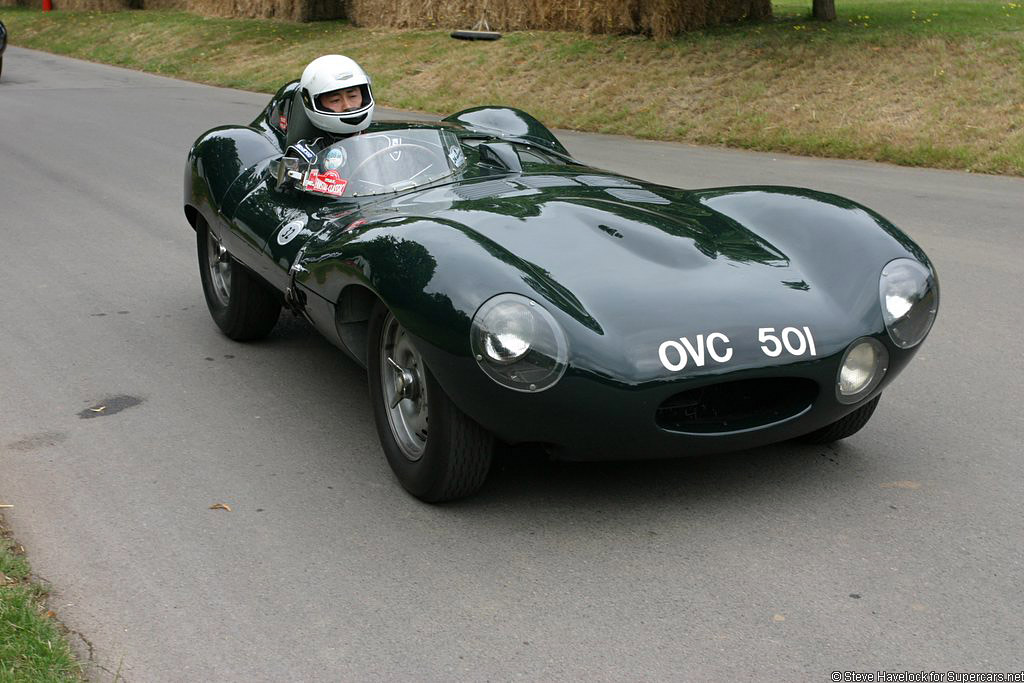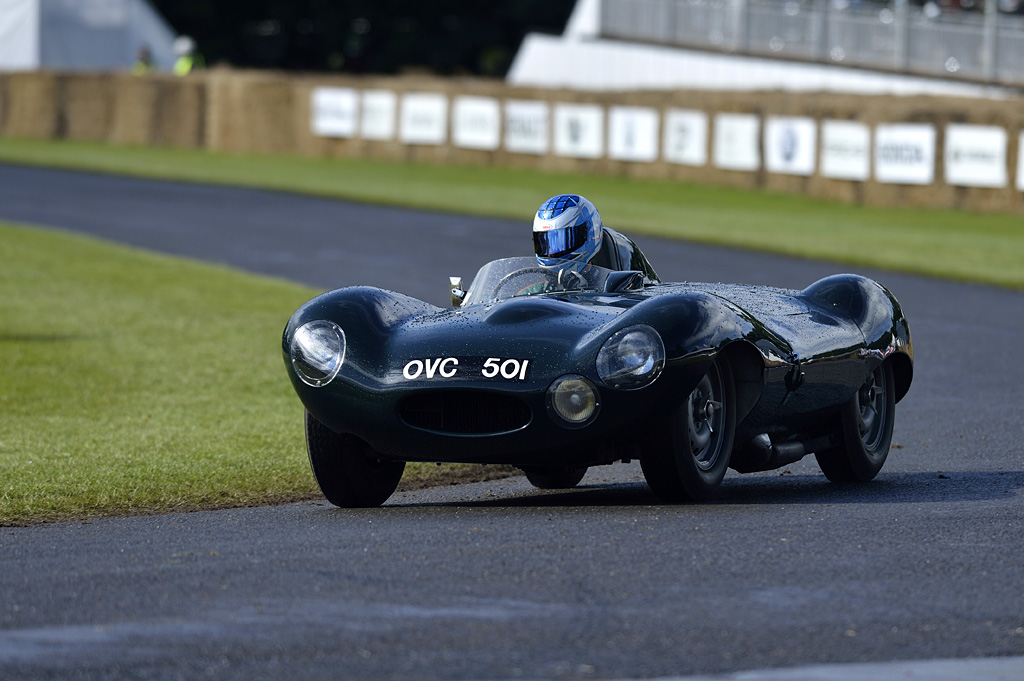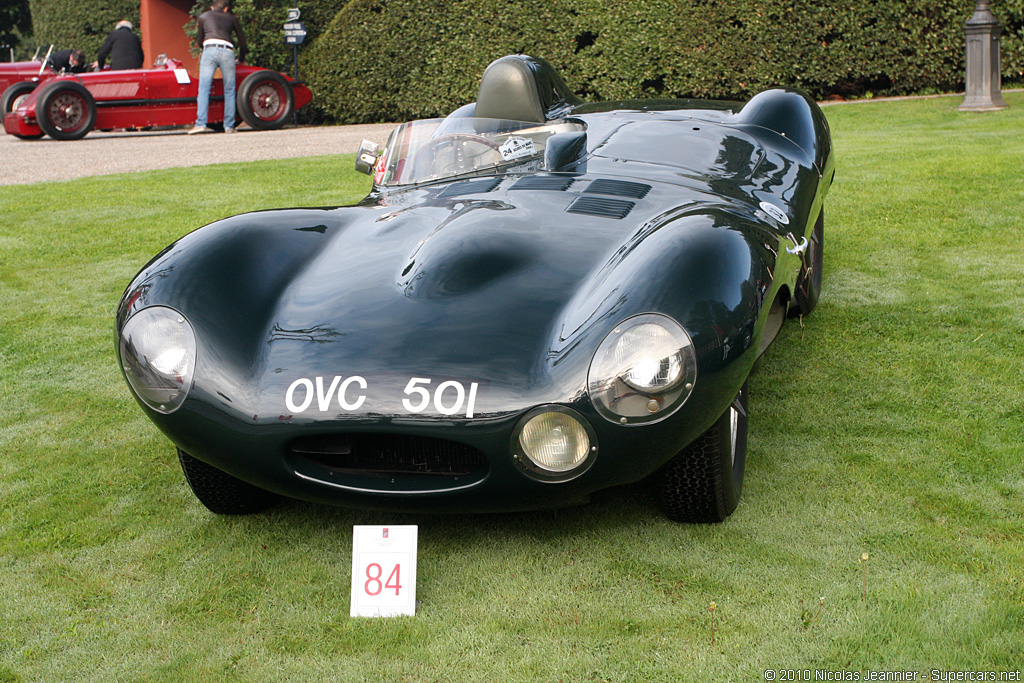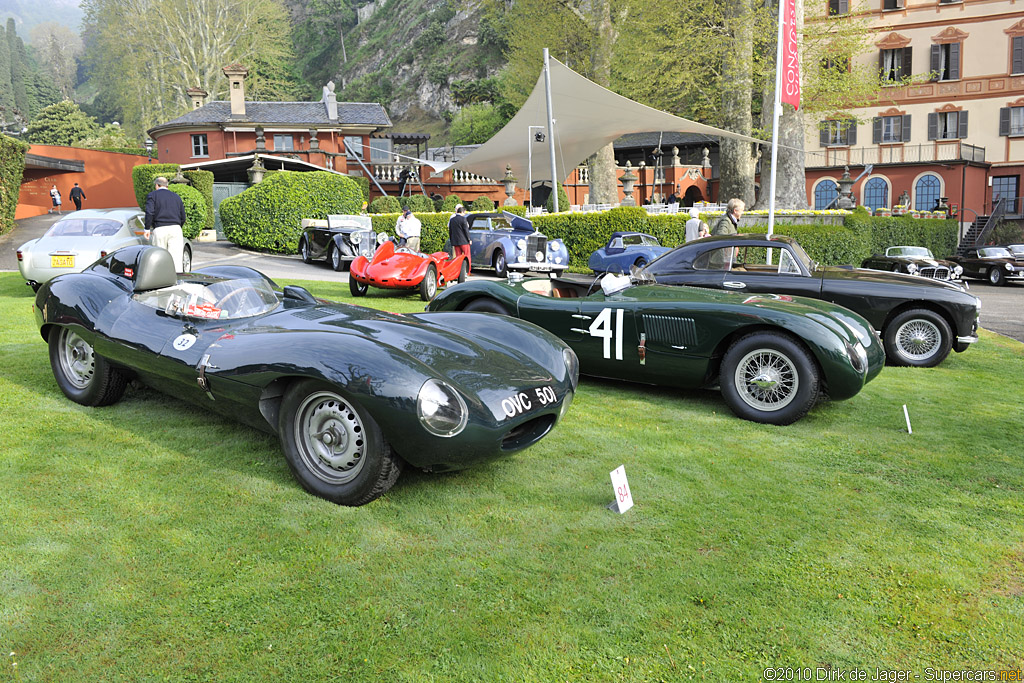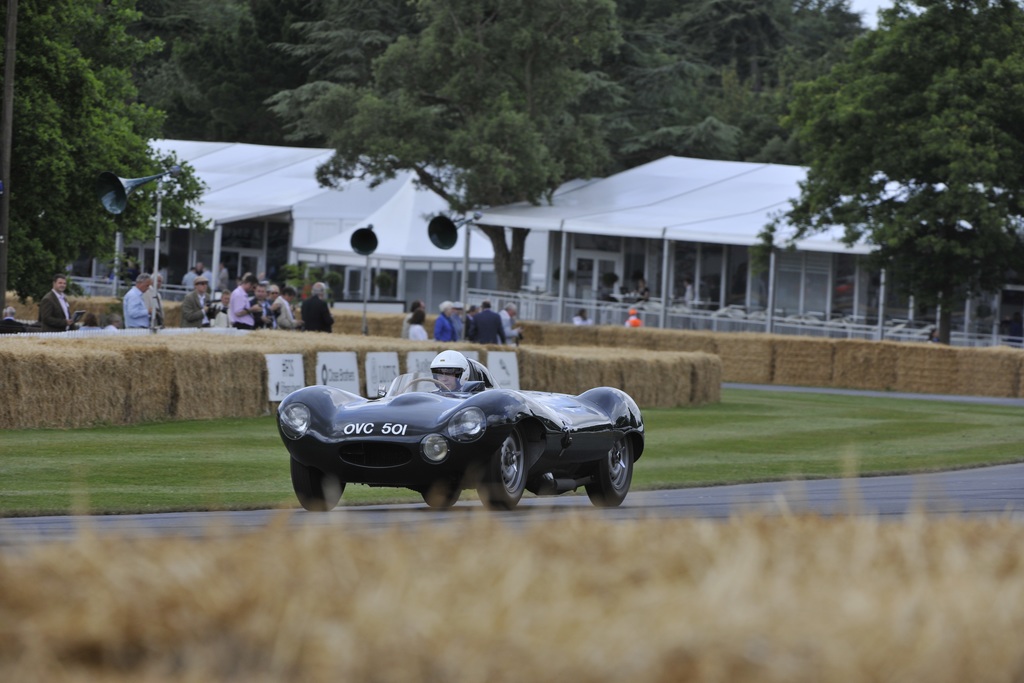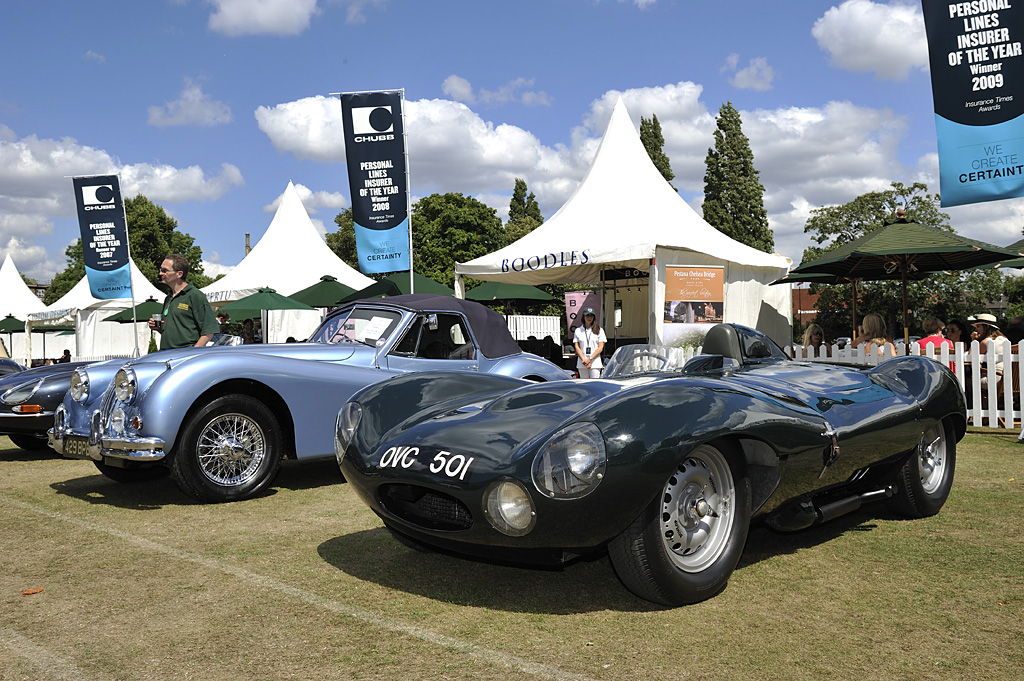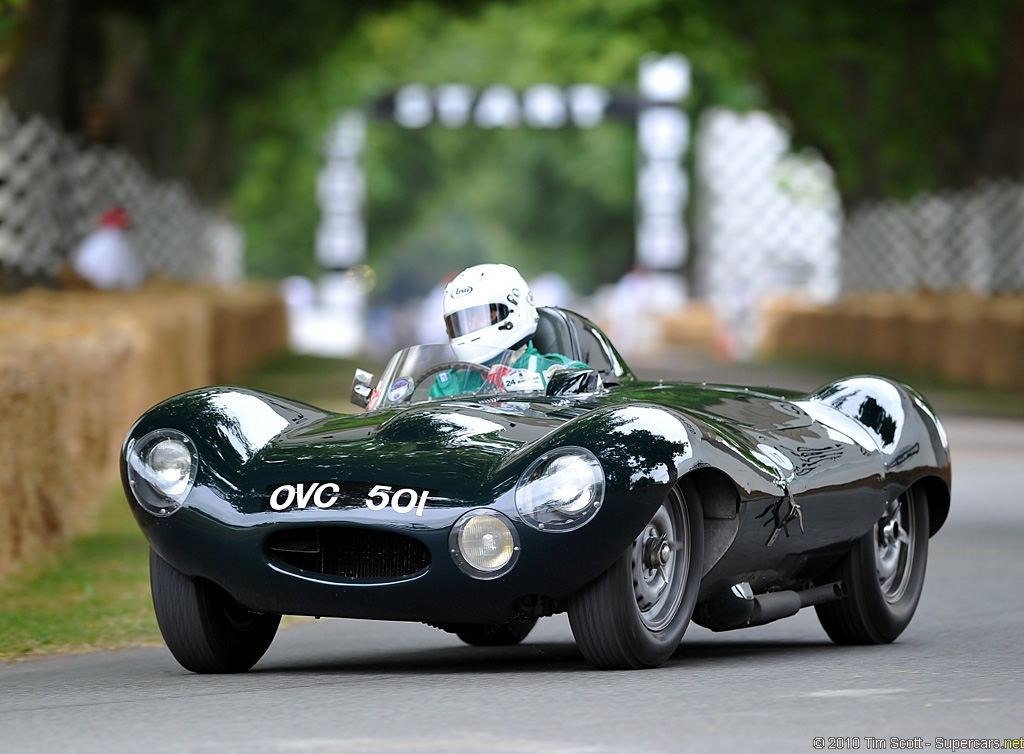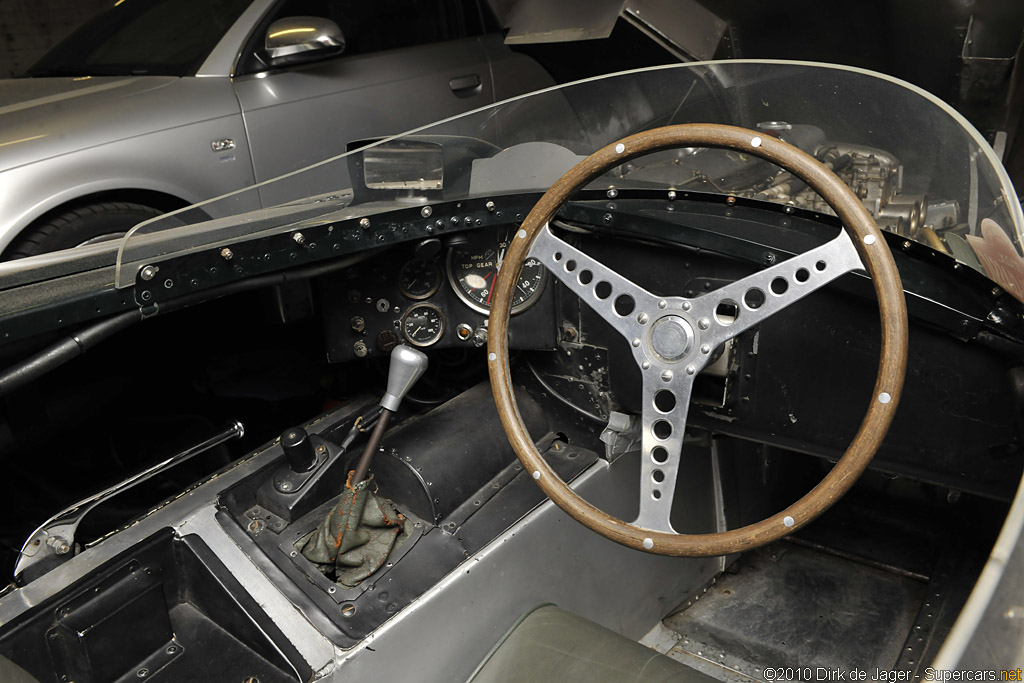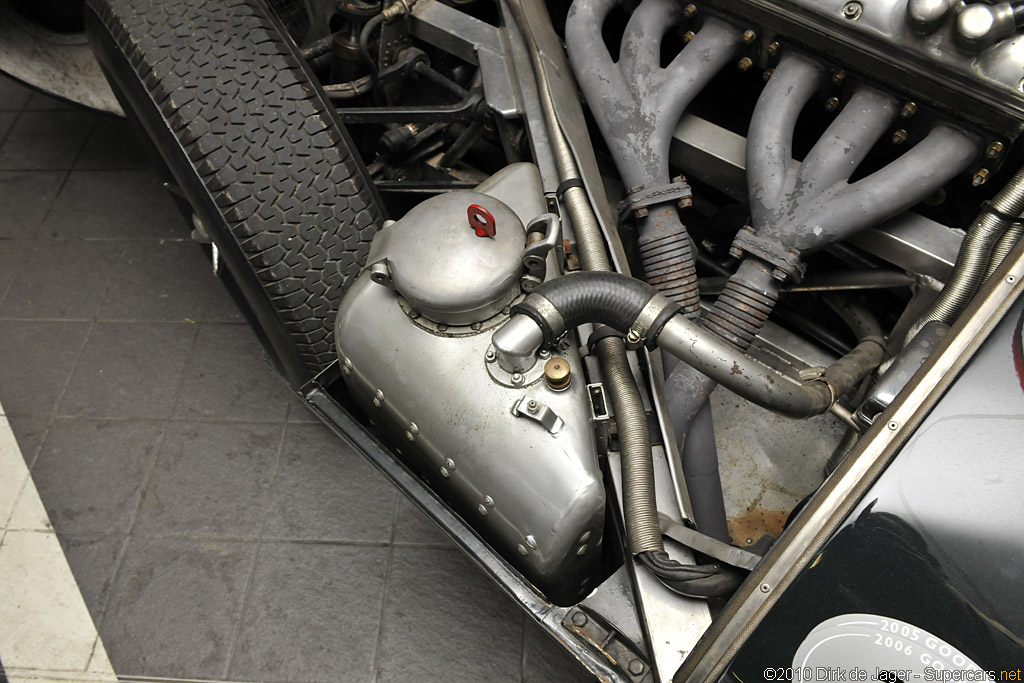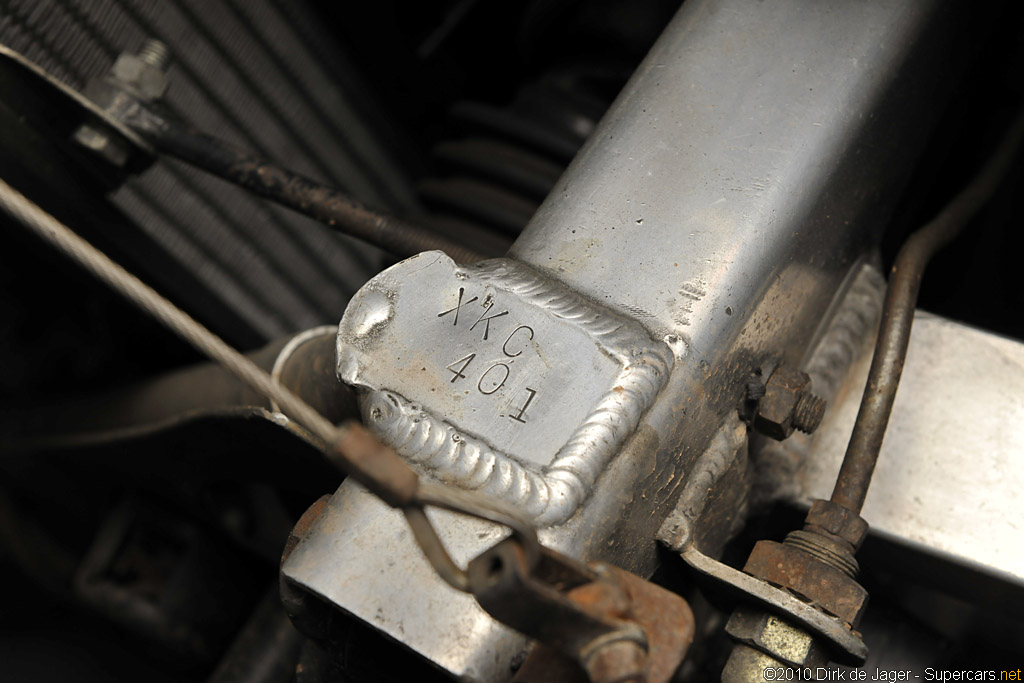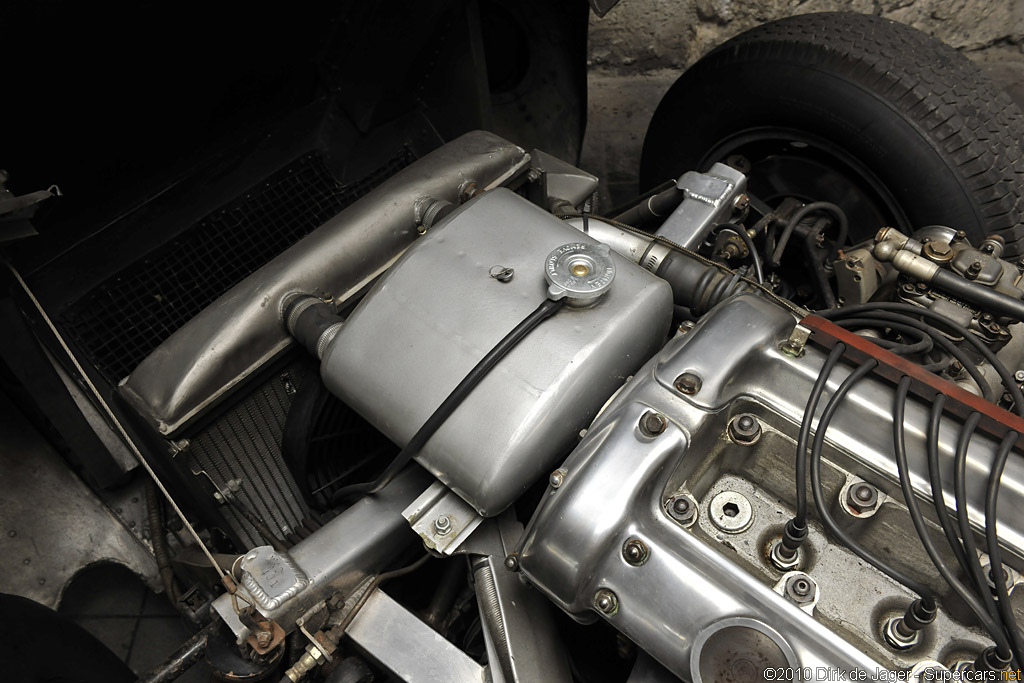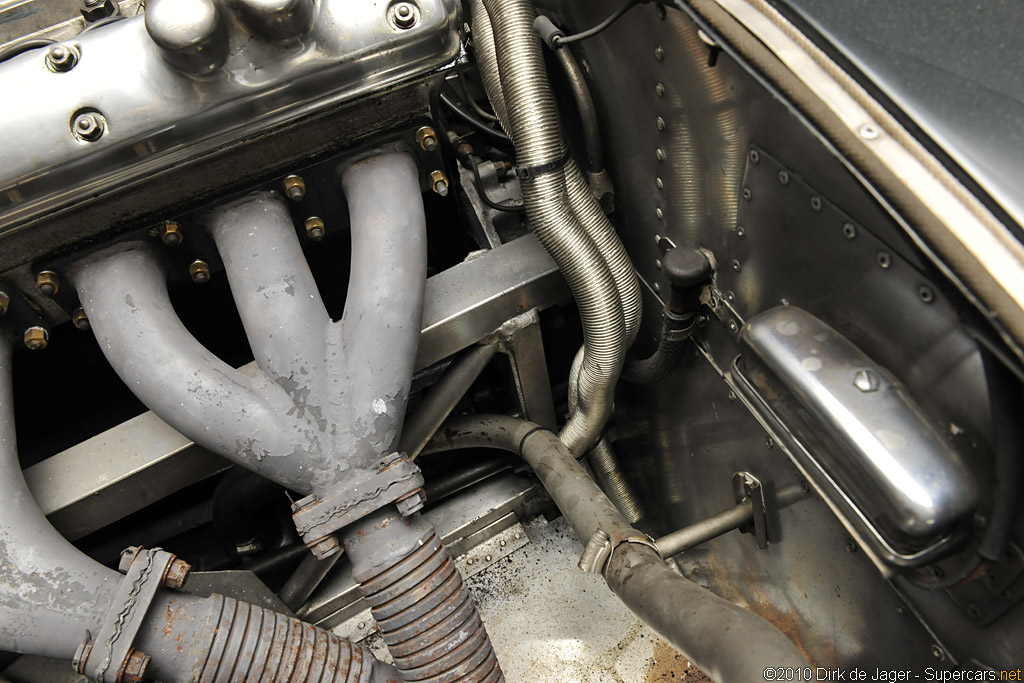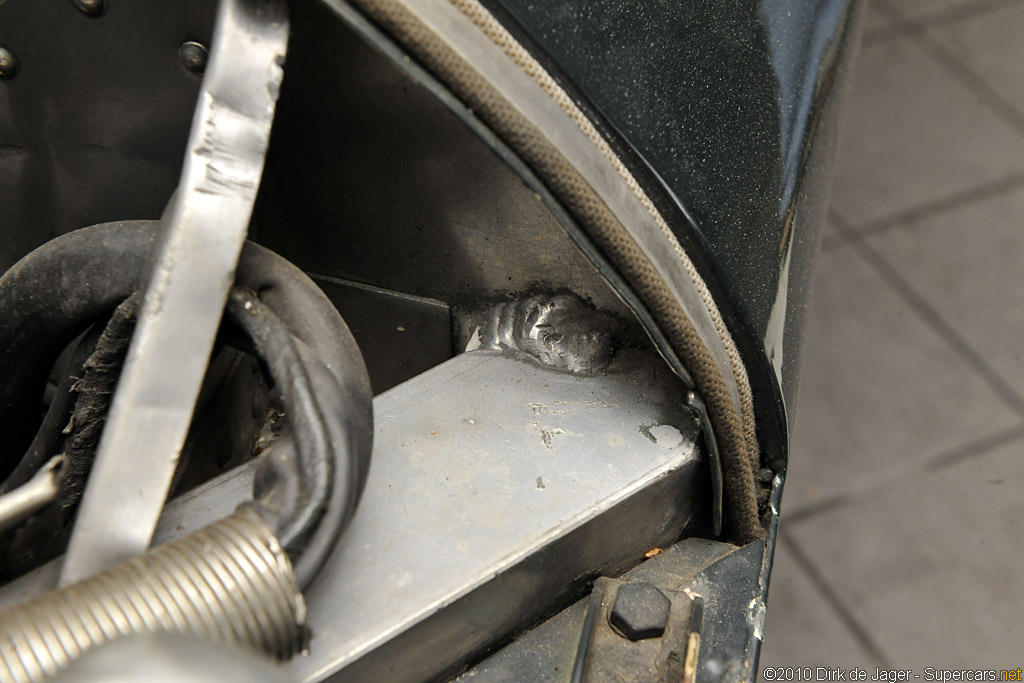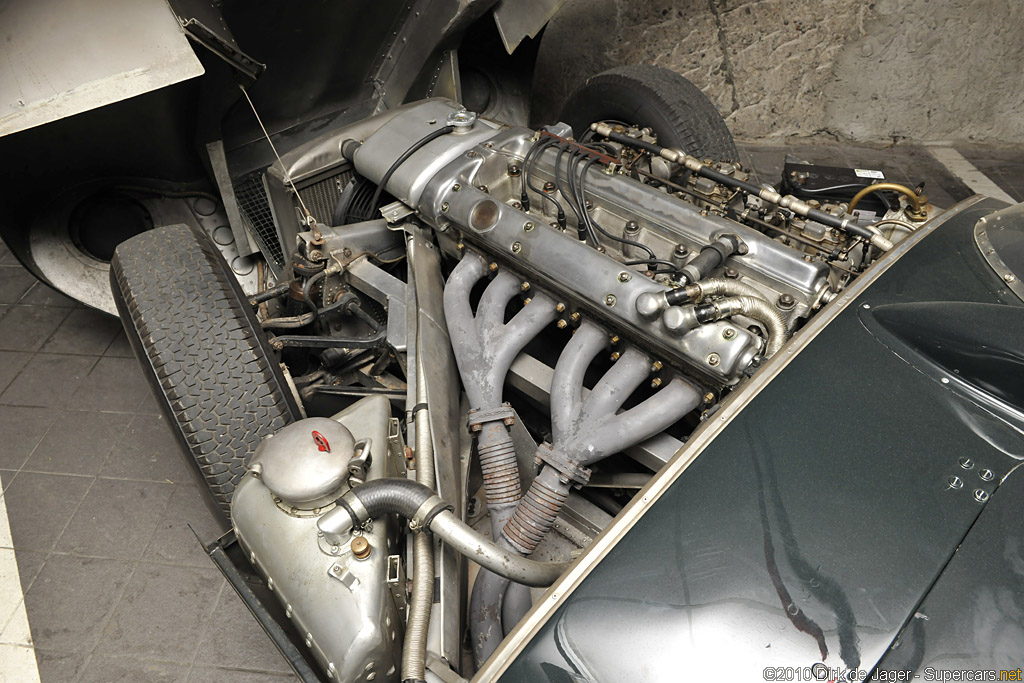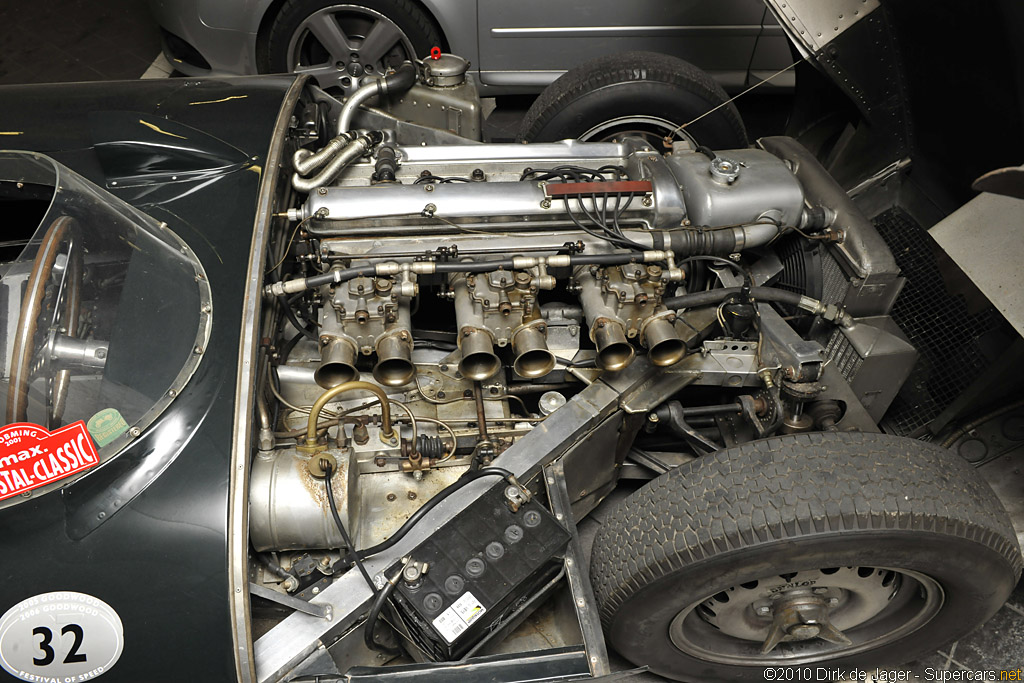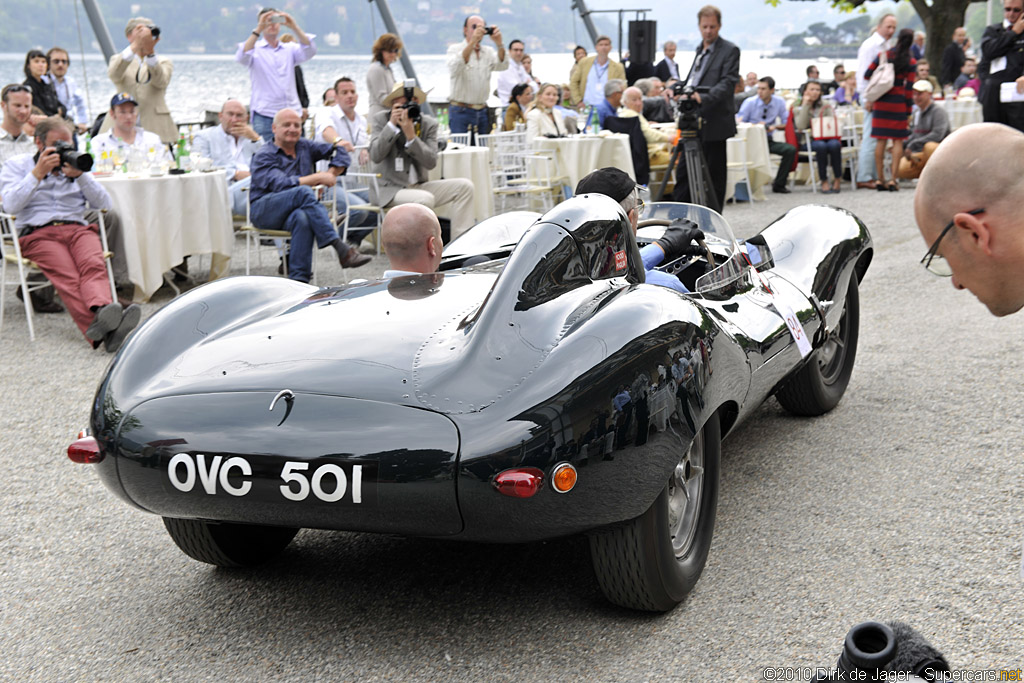1954 Jaguar D-Type Prototype
Before Jaguar started to produce the D-Type, a small group of pre-production cars were made starting with the prototype chassis XKC401. This car became the testbed for the new ideas that Malcom Sayer and others would implement into their already winning C-Type design. Our feature car also has the distinction of remaining in largely original condition and is easily spotted by its long-time OVC501 registration tag.
Even before the 1953 victory at Le Mans, it became clear to Jaguar that a new car would be necessary to stay ahead of Ferrari, Alfa Romeo, Aston Martin and Maserati. Sir Williams Lyons, the founder of Jaguar, assembled a team of Engineers including Malcom Sayer, an aviation aerodynamist, to create the all-new D-Type.
See Jaguar D-Type Review and Full Image Gallery
The first prototype was built up similar to the production cars with an innovative chassis structure. It used stressed-skin engineering, incorporating the framework with riveted aluminum body panels to form a single rigid structure. Such design made the D-Type one of the first cars to use monocoque construction.
The prototype was fabricated using the lightest materials possible including aluminum and magnesium alloys but many of these were replaced by steel for series production. A good example of this is the front sub frame which is fabricated in aluminum on the prototype and steel on the later versions for ease of repair and durability.
Design requirements for the D-Type said it should be lower and shorter that its predecessor. Most of the shape came from mathematical computation with the help of Malcom Sayer. Initial tests on the unpainted prototype revealed a top speed of 178 mph, almost 30mph faster than the Type-C.
The XK-based engine powering the D-Type played a large role in helping achieve a high top speed. It was both shorter, thanks to dry-sump lubrication, and more powerful than the previous engines. The combination of a revised block, larger valves and triple Weber carburetors helped the engine achieve 245 bhp.
Numerous details separate the D-Type Prototype from all the other cars. This includes a unique cockpit with gauges on the left side of the steering wheel and a riveted head cowl that was properly formed on subsequent cars. The prototype was always retained as a test bed and was never actively raced.
It was first tested on April 13th, 1954 and later was used at the Le Mans test to set the unofficial lap record. The car was continually used for testing items such as the ZF differential de Dion-tube rear suspension. For a long time it was displayed at the Jaguar/Daimler Heritage Trust. More recent outtings include the 2006 Goodwood Festival of Speed and an appearance at the 2010 Villa d’Este Concorso d’Eleganza.
See Jaguar D-Type Review and Full Image Gallery
In Detail
| type | Racing Car |
| built at | Coventry, England |
| production | 1 |
| engine | Cast Iron Inline-6 |
| position | Front Longitudinal |
| aspiration | Natural |
| valvetrain | DOHC 2 Valves / Cyl |
| fuel feed | 3 Weber 45 DC03 3 Weber DC03 Carburetors |
| displacement | 3442 cc / 210.0 in³ |
| bore | 83 mm / 3.27 in |
| stroke | 106 mm / 4.17 in |
| compression | 9.0:1 |
| power | 182.7 kw / 245 bhp @ 6500 rpm |
| specific output | 71.18 bhp per litre |
| torque | 325.4 nm / 240 ft lbs |
| body / frame | Magnesium Alloy Monocoque w/Aluminum Front Subframe |
| driven wheels | RWD |
| front tires | 6.5×16 |
| rear tires | 6.5×16 |
| front brakes | Dunlop Discs |
| rear brakes | Dunlop Discs |
| front wheels | F 40.6 x 14.0 cm / 16 x 5.5 in |
| rear wheels | R 40.6 x 14.0 cm / 16 x 5.5 in |
| steering | Rack & Pinion |
| f suspension | Double Wishbones w/Torsion Bars, Telescopic Dampers |
| r suspension | Solid Axle w/Trailing Links, Transverse Torsion Bar, Telescopic Dampers |
| wheelbase | 2300 mm / 90.6 in |
| front track | 1270 mm / 50.0 in |
| rear track | 1219 mm / 48.0 in |
| length | 3912 mm / 154.0 in |
| width | 1664 mm / 65.5 in |
| height | 1372 mm / 54.0 in |
| transmission | 4-Speed Manual |
| final drive | 3.54:1 |
| top speed | ~280.0 kph / 174 mph |
| 0 – 60 mph | ~7.0 seconds |





